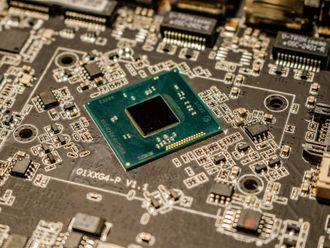Shanghai: China’s yuan advanced to another record high on Thursday, with traders expressing surprise at the resilience of corporate yuan demand and the central bank’s willingness to permit additional appreciation.
Spot yuan touched an all-time high of 6.1336 per dollar mid-morning and has now hit intraday records for seven of the last ten sessions.
The central bank’s daily midpoint, set at 6.1925, was also its strongest ever and is the latest in a string of sharply firmer fixings.
The strong fixings have surprised many market participants, after the central bank held the yuan largely steady in the first quarter this year.
The strong fixings have raised expectations that the PBOC is preparing to widen the yuan’s daily trading band. Currently the spot rate is allowed to diverge by no more than one percent from the midpoint that the PBOC sets each morning.
But the spot rate has stubbornly tracked the midpoint higher, confounding what traders believe is an effort by the central bank to bring the midpoint closer to the spot rate.
Narrowing the gap between spot and fixing would reduce the risk that a band widening would lead to an abrupt, one-off strengthening of the yuan as soon as the band is widened.
Market pressure
The spot rate has consistently traded near the very top end of the band since late last year, indicating that the midpoint has acted as a restraint on market pressure for greater appreciation.
The persistence of the gap, despite progressively stronger fixings, undermines the central bank’s repeated claims over the last year that the exchange rate is already at or near its equilibrium value.
On the other hand, traders and analysts increasingly believe that the yuan’s recent rally — which has seen the Chinese currency rise by 1.3 per cent since April — is driven as much by speculation as economic fundamentals.
Chinese economy grew more slowly than expected in the first quarter, and purchasing manager indexes for April suggest growth remained sluggish last month.
Meanwhile, trade data released on Wednesday, which showed exports growing faster than expected, again raised suspicions that firms are manipulating trade invoices as a means to skirt China’s capital controls and convert more dollars to yuan.
Such excess yuan purchases would amount to hot money inflows by firms or investors aiming to profit from further yuan gains.












